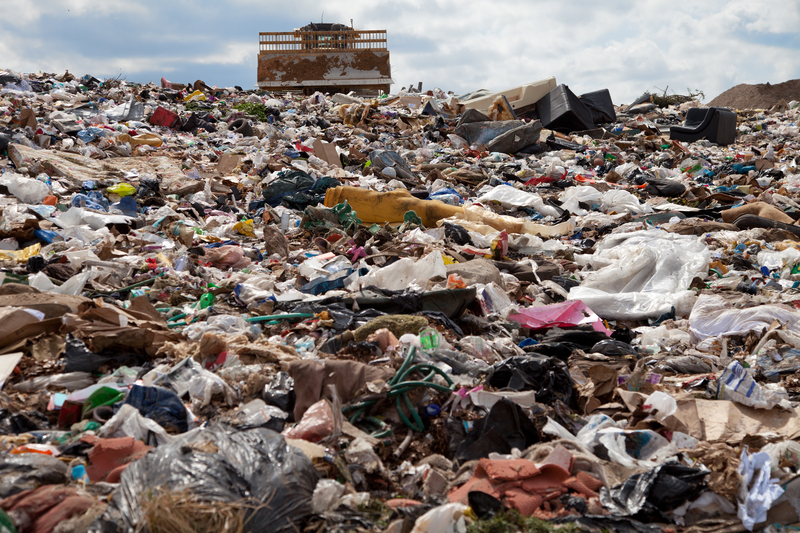Step-by-Step Guide to Recycling Pots and Pans
If you've recently cleaned up your kitchen or swapped out old cookware for a new set, you might be wondering what to do with your old pots and pans. Recycling these kitchen staples can be tricky due to their composition, coatings, and handles. To tackle this challenge, we've put together an ultimate guide to recycling pots and pans. This article will walk you through every step, offering eco-friendly tips, recycling center guidance, and creative reuse ideas. Let's turn your kitchen cleanout into a sustainability win!

Why Recycle Pots and Pans?
Environmental Benefits
- Reduces landfill waste: Disposing of metal cookware in landfills means contributing to environmental pollution and loss of usable materials.
- Resource conservation: Recycling cookware recovers valuable metals such as aluminum and stainless steel, conserving natural resources and reducing the need for mining.
- Energy savings: Manufacturing new products from recycled metals uses significantly less energy than starting from raw materials.
Legal and Ethical Considerations
In some places, metal recycling is mandatory for certain items. Ethically, recycling helps reduce your carbon footprint and supports a circular economy. Responsible disposal also aligns with community expectations and personal values focused on sustainability.
Understanding Your Pots and Pans: What Are They Made Of?
Common Materials
- Aluminum: Lightweight, often coated with non-stick surfaces.
- Stainless Steel: Durable, resistant to rust, and widely recyclable.
- Copper: High heat conductivity, sometimes lined with tin.
- Cast Iron: Heavy and highly durable, sometimes enamel-coated.
- Non-Stick Coatings: Teflon (PTFE) or ceramic coatings can complicate recycling.
- Mixed Materials: Handles may be made of plastic, silicone, or wood.
Tip: Check for recycling symbols or material stamps on the base of your cookware to identify its type before proceeding.
Step-by-Step Process for Recycling Old Pots and Pans
Step 1: Assess Condition
Before recycling, evaluate the condition of each pot and pan. If they're still usable, consider donating or repurposing them, as reuse is the most sustainable option!
- Minor scratches: Consider donating to charity, shelters, or resale shops.
- Damaged or unusable: Proceed to recycling or upcycling.
Step 2: Remove Non-Metal Components
Handles made of plastic or wood, glass lids, and rubber parts must be separated. Metal recyclers typically accept only clean, pure metal items.
- Unscrew or pry off plastic, silicone, or wooden handles.
- Remove non-metal lids and knobs (don't forget oven-safe silicone handles or metal rivets may be accepted).
- Keep metal parts together and set aside disposables for proper waste disposal.
Step 3: Clean Your Cookware
Wash off major food debris, oils, or residues. While minor stains aren't an issue, a clean item is safer for recycling center staff to handle.
Step 4: Identify the Best Recycling Option
- Curbside Recycling: Some municipal recycling programs accept cookware (especially aluminum and steel) if it fits in bins. Always check your local recycling rules first!
- Local Scrap Yards: Scrap metal dealers commonly accept old pots and pans, often regardless of condition or coating. You may even earn a small amount based on the weight and type of metal.
- Special Recycling Events: Some cities host drop-off events for hard-to-recycle items, including cookware and small appliances.
Important: Non-stick cookware may not be accepted by all recyclers due to its coating. Always clarify beforehand.
Step 5: Transport to Recycling Facility
- Bundle similar metals together (aluminum with aluminum, steel with steel) to maximize recycling value.
- Label any unusual items or let staff at the recycling center know if your cookware has coatings.
- Drop off items during operating hours and follow staff guidelines for sorting and unloading.
Step 6: Dispose of or Recycle Non-Metal Parts
Plastic handles, glass lids, or silicone parts typically go in regular trash unless your local recycling accepts these materials. Glass lids may qualify for glass recycling--check your community's requirements.
Alternative Solutions: Upcycling & Donation
The Greenest Choice: Repurpose!
- Planters: Turn large pots into quirky garden planters for flowers or herbs.
- Art Projects: Use lids for clocks or wall art, or turn pans into chalkboards or decorative trays.
- Storage: Use handled pans or pots to store kitchen utensils, tools, or craft supplies.
- Pet Bowls: Old, metal pans can become durable food or water bowls for pets or wildlife.
Donation Options
- Charity shops such as Goodwill or The Salvation Army.
- Local shelters and food banks (if items are in usable condition).
- Community free-cycles, buy-nothing groups, and online marketplaces.
What NOT to Do with Old Pots and Pans
- Do not burn or incinerate: Burning non-stick or coated pans can release toxic fumes.
- Don't place in regular trash if avoidable: Metal lasts for centuries in landfills, taking up valuable space.
- Avoid mixing cookware types: Scrap yards prefer sorted metals--don't mix aluminum and steel if possible.
Tips for Eco-Conscious Cookware Disposal
Choose Sustainable Cookware Brands
When you buy new cookware, look for brands that offer take-back and recycling programs, utilize recycled metals, and produce durable, long-lasting products.
Host Community Collection Days
If you struggle to find local recycling options, organize a neighborhood collection event. Coordinate drop-offs at recycling or donation centers to maximize your environmental impact.
Check for Manufacturer Recycling Programs
Some manufacturers, like Le Creuset and Calphalon, may accept old cookware back to recycle responsibly. Visit the brand's website or contact customer support for details.
Frequently Asked Questions About Recycling Pots and Pans
Can I Recycle Non-Stick Pans?
Maybe. It depends on your local recycling center. Most require removal of PTFE (Teflon) coatings, but some scrap yards accept non-stick pans as-is. Always check with your facility.
How Do I Tell If My Pan is Aluminum or Stainless Steel?
Aluminum is lightweight and often has a dull finish. Stainless steel is heavier, magnetic, and shiny. Use a magnet--if it sticks, you have steel; if not, likely aluminum.
My Recycling Center Doesn't Accept Cookware--What Else Can I Do?
Consider dropping off at a scrap yard, donating usable items, or upcycling at home. Alternatively, ship items to specialty recyclers (search for "mail-in cookware recycling" online).
Summary: Recycling Pots and Pans the Right Way
Recycling old pots and pans reduces landfill waste, conserves resources, and supports a cleaner planet. Start by assessing your cookware for donation or creative reuse possibilities. Remove non-metal parts, clean thoroughly, then sort by material before heading to a recycling center, scrap yard, or special event. When in doubt, contact your local recycling facility for guidance.
Remember: Every pan recycled is a step forward for sustainability. With the right steps, you can recycle pots and pans easily and responsibly--keeping your home, community, and Earth a little cleaner!

Resources for Recycling Cookware
- Earth911 Recycling Search: Find local recycling options
- Call2Recycle: Batteries and specialty item recycling
- EPA Tips on Reducing Waste: Official EPA guidelines
Final Thoughts: Make Your Old Cookware Count
Whether you're decluttering your kitchen, renovating, or simply upgrading, eco-friendly cookware disposal is achievable. By following this comprehensive step-by-step guide to recycling pots and pans, you contribute to environmental health and set an example for responsible waste management. Now is the perfect time to act for a sustainable kitchen and a greener future!